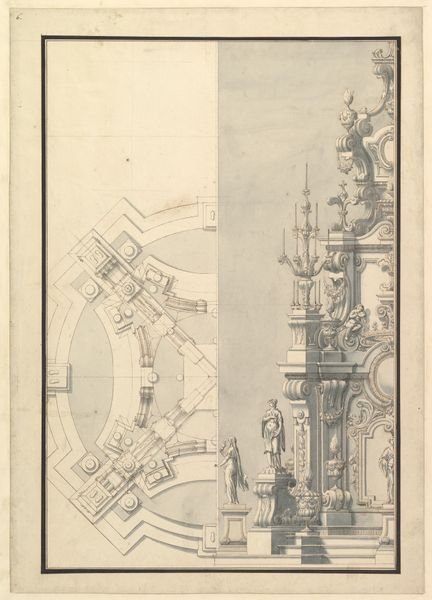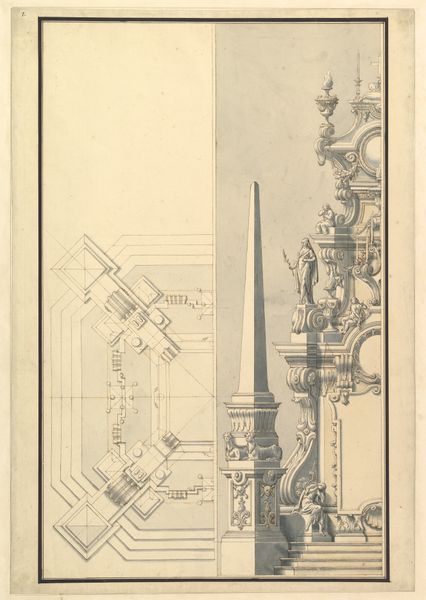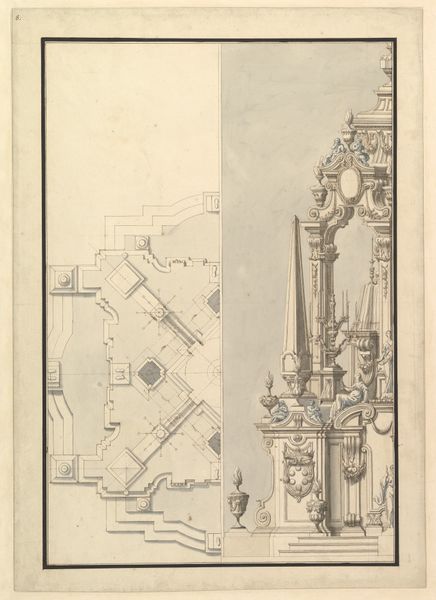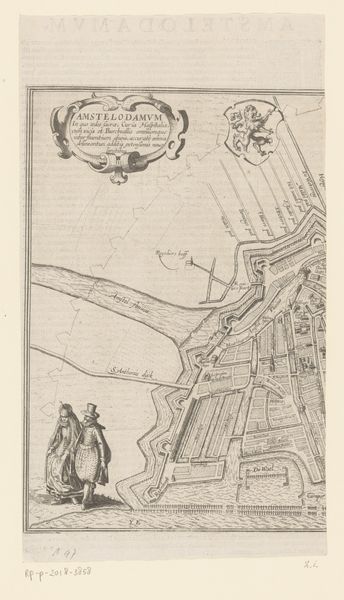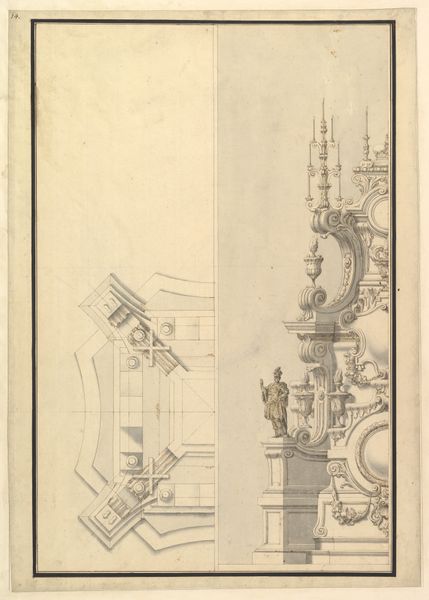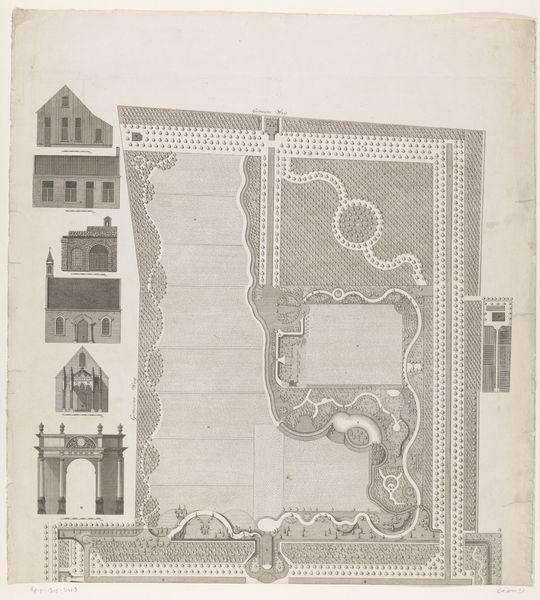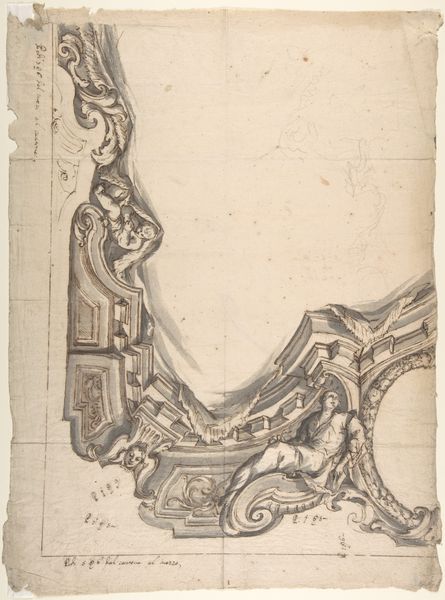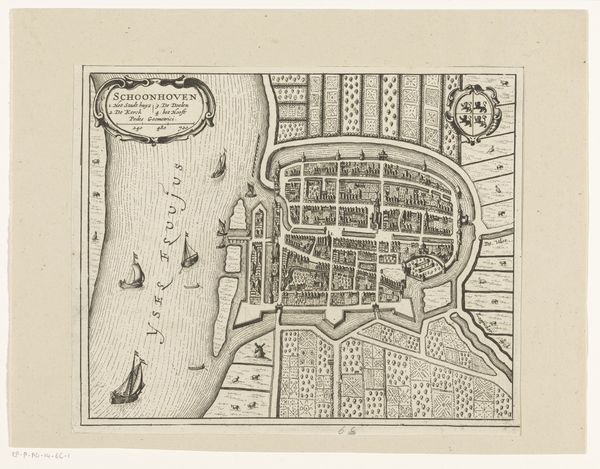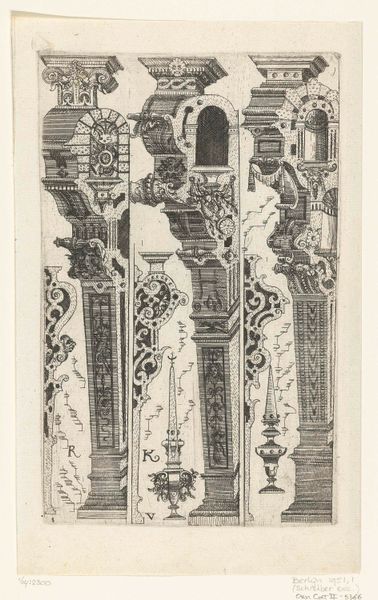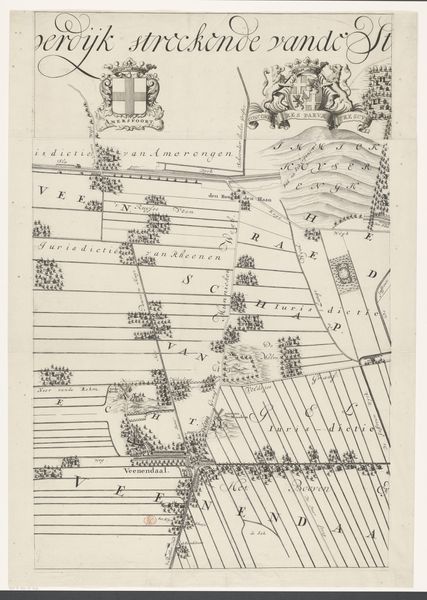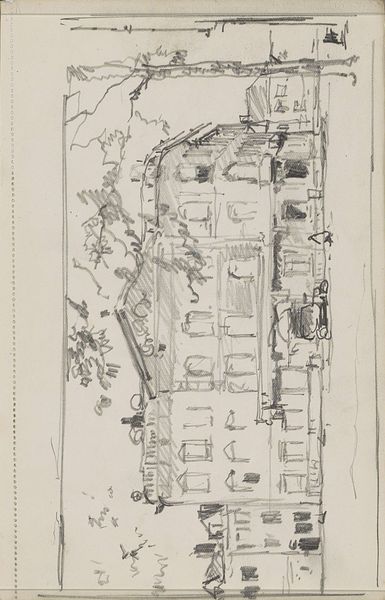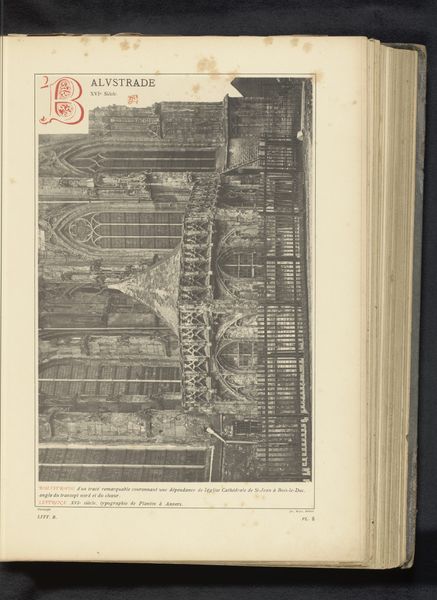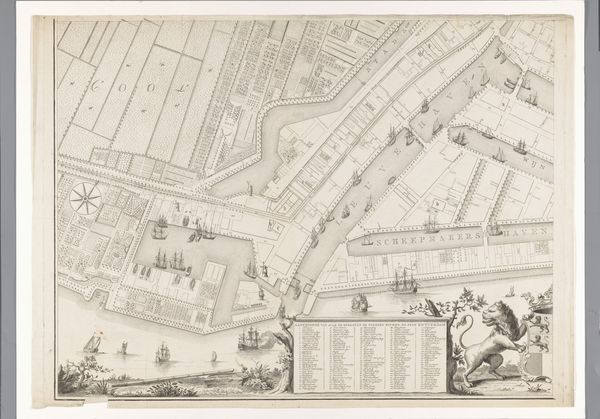
Half Elevation and Half Ground Plan for a Catafalque 1696 - 1756
0:00
0:00
drawing, print, architecture
#
drawing
#
baroque
# print
#
geometric
#
architecture
Dimensions: 19-1/4 x 14-1/4 in. (48.9 x 36.2 cm)
Copyright: Public Domain
Curator: This delicate drawing, held here at the Metropolitan Museum of Art, presents "Half Elevation and Half Ground Plan for a Catafalque" attributed to Giuseppe Galli Bibiena. While the dating is broad, we place its creation somewhere between 1696 and 1756. Editor: Woah, I mean, on first glance, it’s both precise and wildly imaginative at the same time! Like something Escher would design for a grieving Roman Emperor. There’s such stark contrast between the technical rendering on one side and the almost fever-dream ornamentation on the other. Curator: Precisely. This tension, or perhaps duality, embodies much of the Baroque aesthetic. Consider the role of catafalques during this era. They served not just as displays of mourning, but also as potent political and social statements. The architecture, captured through the use of drawing and printmaking, was rarely about the structure itself but, instead, how one may promote ideas about power, prestige, and the divine. Editor: The level of detail is stunning. Look at the tiny figures perched on the elevations - one even has a trumpet! And the ground plan—it gives you a real sense of how this grandiose temporary structure would have occupied the space and commanded attention. Makes you wonder whose memory it honored, and what statement it intended to send to those in attendance at the time. Curator: That's the crux of it. Often these elaborate structures commemorated monarchs or members of the high clergy, underscoring their status even in death. It invites questions of who gets remembered, and *how*, which of course carries resonances for our own times as well. One has to ask how the cost of building, maintaining, and, later, dismantling these monuments, were funded and what the socio-political cost might have been in society, generally. Editor: It almost feels like a blueprint for a theatrical experience as much as an architectural one, doesn’t it? I am sitting here imagining the scene that may have unfolded beneath this… well, literally above people’s heads, anyway, and it makes me contemplate performative sadness a little, too. Curator: I agree. In that way, Giuseppe Galli Bibiena invites a lot of debate today about performativity. And about whose stories get told and preserved, even in these symbolic, fleeting gestures. Editor: Mmh, so much pomp, so much circumstance. I think I’m going to spend a bit contemplating where true remembrance truly resides, as opposed to public display. Curator: And that's a thought this artwork encourages. Thanks for your insights.
Comments
No comments
Be the first to comment and join the conversation on the ultimate creative platform.

